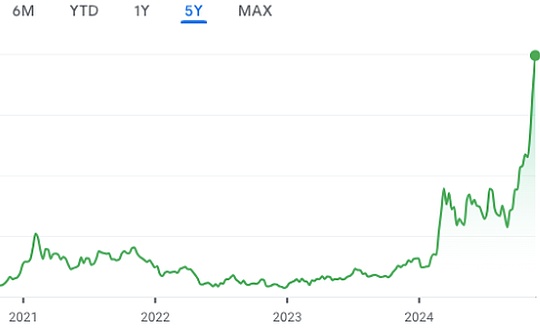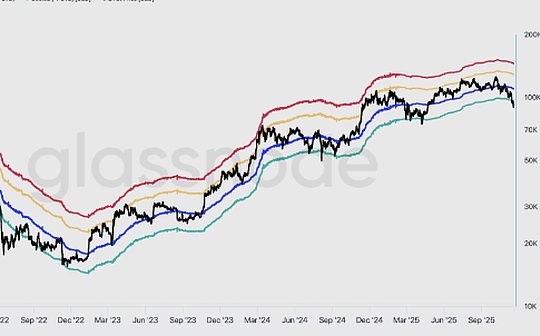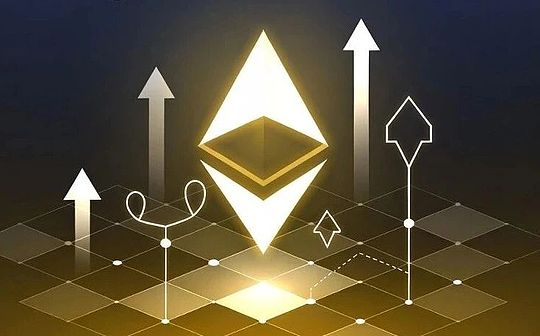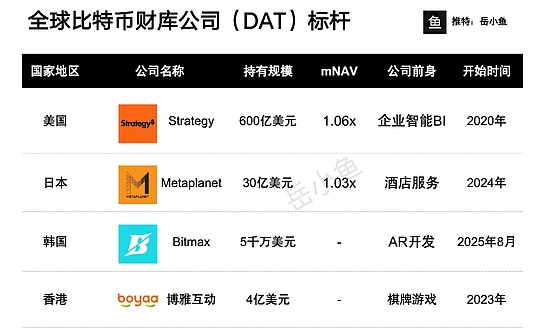
Written by: 0xjs@Bitchain Vision
Bitcoin exceeded 80,000 US dollars!Bitcoin exceeded $90,000!Bitcoin broke through $95,000!Bitcoin broke through $99,000!
Obviously, Bitcoin will soon break through the $100,000 mark.
Common sense tells us,The direct reason for the sharp rise in prices is that some people are buying in large quantities with real money and silver. After all, “Money Talks”.
In this round of crypto bull market, crypto tokens have severe differentiated, and the two most impressive sectors are Bitcoin and Solana.Solana’s rise is mainly driven by the influx of crypto players into Meme, while Bitcoin’s rise comes mainly from US Bitcoin ETFs and some listed companies, especially MicroStrategy.In this article, we mainly focus on MicroStrategy.
On November 21, a reporter from Bitcoin Vision spent a night reading the documents submitted by MicroStrategy since 2021 on the official website of the US SEC, and deeply disassembled MicroStrategy’s behavior and funding sources of Bitcoin purchase.It is concluded that MicroStrategy is an enhanced version of “Grayscale + Luna”.
Let’s first take a look at the overall situation of MicrosStrategy, then disassemble the source of funds for MicroStrategy to buy Bitcoin, and finally compare Grayscale and Luna.the following.
MicroStrategy is fearless of bull and bear: spending more than $16 billion to firmly buy Bitcoin
MicroStrategy has implemented the Bitcoin reserve strategy since September 2020, and has firmly implemented the Bitcoin reserve strategy through the cycle for four years without fear of bull and bear. For example, in April and November of the bull market in 2021, it bought Bitcoin for more than $59,000..

MicroStrategy continues to buy BTC
Statistics from Bitlink Vision reporters found that as of November 22, 2024,MicroStrategy has spent $16.58 billion to buy Bitcoin, currently holds 331,000 Bitcoins, and the market value of the Bitcoins held is nearly US$33 billion.
Since the successful issuance of Bitcoin ETF in January 2024, the Bitcoin ETF has managed more than 1.24 million Bitcoins, the total asset value has exceeded US$120 billion, and the total net capital inflow is about US$30.3 billion.Bitcoin ETFs are the investment targets of many investors, not from a single investor.
As far as you can see, MicroStrategy may be the single entity that spends the most on buying Bitcoin.
So the question is, where does so much money MicroStrategy comes from when buying Bitcoin?
Bitchain Vision reporter read the report submitted by MicroStrategy to the US SEC.Its funds mainly come from two sources: Convertible Senior Notes and At-the-Market Equity Offerings.
Among them, Convertible Senior Notes is aimed at qualified institutional investors, and At-the-Market Equity Offerings is directly aimed at the secondary market.
Convertible Senior Notes: US$7.26 billion Qualified Institutional Investors
Below are the notes issued by MicroStrategy since 2020. Except for the $500 million priority guaranteed bond issued in June 2021, the rest are convertible senior Notes.
 in,On November 21, 2024, MicroStrategy’s newly issued US$3 billion convertible bond cash can be used at any time to buy Bitcoin.Perhaps in the past two days, when MicroStrategy used this $3 billion to buy Bitcoin, it was when Bitcoin exceeded $100,000.
in,On November 21, 2024, MicroStrategy’s newly issued US$3 billion convertible bond cash can be used at any time to buy Bitcoin.Perhaps in the past two days, when MicroStrategy used this $3 billion to buy Bitcoin, it was when Bitcoin exceeded $100,000.
Learn what Convertible Senior Notes is and you will find it a really good financial tool.
The so-called convertible priority notes are special debt securities that contain options that can convert the notes into a predetermined number of issuer shares.If the stock rises, it can be converted into stocks. If the stock price is low, the principal and interest will be paid according to the debt.And priority convertible notes are preferred over all other debt securities issued by the same organization and can be compensated first.thereforeIt is a bond with high returns on the top and guaranteed ones.
Importantly, convertible priority debts generally have mandatory redemption clauses.After the forfeiture period specified in the terms is passed or when the early redemption clause is triggered, the issuer may initiate a compulsory redemption.Before the specified redemption date, investors need to convert the convertible bond into company stocks, otherwise the issuer has the right to forcefully redeem the convertible bond at the price of the face value of the bond plus accrued interest.andIn most cases, investors will actively convert into stocks.
Take MicroStrategy’s redeemed 2025 Convertible Notes as an example. The 2025 Convertible Notes expiration date is December 15, 2025.butMicroStrategy issued an announcement on June 13, 2024, requiring 2025 Convertible Notes holders to choose to convert 2.5126 MicroStrategy Class A common stock for every $1,000 before 5:00 pm New York time on July 11, 2024Applicable conversion rate (reflects the conversion price of USD 397.99 per share) conversion notes.Otherwise, MicroStrategy will force redemption of all outstanding notes on July 15, with the redemption price equal to principal + accrued unpaid interest.
MicroStrategy’s stock price on that day was around $1,300 (MicroStrategy completed a 1:10 split on August 8, and the price of $1,300 was the pre-split price), and it was obvious that creditors would choose to convert debts into stocks.Creditors complete arbitrage after obtaining the stock.
Why do institutional investors actively purchase convertible bonds from MicroStrategy?Because its risk is extremely small, it is basically stable to make a profit and no compensation is lost, and priority convertible bonds have priority claims.Currently, MicroStrategy convertible bonds have a total liability of US$7.26 billion, and the market value of Bitcoin held by MicroStrategy is nearly US$33 billion. Even if Bitcoin falls 75%, MicroStrategy convertible bond creditors will not lose money.
So to say,The most important motivation behind convertible bonds is that the issuer asks investors to actively choose to convert the debt into stocks, so that the issuer does not have to use cash to repay the debt.
At-the-Market Equity Offerings: Nearly $10 billion Secondary Market
Below are MicroStrategy’s market stock issuance data since 2020.In the past four years, MicroStrategy has raised a total of US$9.8235 billion by issuing new shares in the secondary market. All of these funds have been used by MicroStrategy to buy Bitcoin.

The so-called market-price stock offering refers to the subsequent stock issuance conducted by a listed company to raise funds after its IPO.In ATM issuance, listed companies gradually sell newly issued shares to the secondary trading market at the market price at the time of the time through designated brokers.Brokers sell shares of the issuing company on the open market to earn cash proceeds and then deliver the proceeds to the issuing company.
Let’s take MicroStrategy’s ATM Equity Offering as an example to illustrate.On August 1, 2024, MicroStrategy signed a sales agreement with TD Securities (USA), The Benchmark Company, BTIG, Canaccord Genuity, Maxim Group and SG Americas Securities brokers (“August 2023 Sales Agreement”).Under the agreement, MicroStrategy may from time to time issue and sell its Class A common stock through sales agents, offering up to $2 billion in shares.According to the 8-K document provided by MicroStrategy to the US SEC on November 11, 2024, MicroStrategy issued a total of 7.854647 million shares, earning a total of US$2.03 billion, and buying all 27,200 bitcoins.
On October 30, 2024, MicroStrategy released its 21/21 plan, saying it raised $42 billion in capital in the coming year, including $21 billion in equity and $21 billion in fixed-income securities to invest in Bitcoin.MicroStrategy disclosed on the same day that MicroStrategy and TD Securities (USA), Barclays Capital, The Benchmark Company, BTIG, LLC, Canaccord Genuity, Cantor Fitzgerald & Co., Maxim Group, Mizuho Securities USA, and SG Americas Securities reached a sales agreement for market price.$21 billion in MicroStrategy stock.The 8-K document submitted by MicroStrategy to the SEC on November 18, 2024 shows that between November 11 and 17, MicroStrategy sold 13.594 million shares, received approximately US$4.6 billion, and bought all 51,780 Bitcoins.
Under MicroStrategy’s plan, brokers still have about $16.4 billion in newly issued shares of MicroStrategy available for sale.
Why is MicroStrategy an enhanced version of “Grayscale+Luna”
Now that I am familiar with MicroStrategy’s “convertible bonds” and “market stock issuance” gold fingers, think about it, are they very much like Grayscale and Luna from the last bull market, and are enhanced versions.
Grayscale Vs. Convertible Bonds:
Recalling the operating mechanism of Grayscale before it was converted into an ETF, Grayscale Trust stocks are only issued to qualified investors, and investors use off-market cash to purchase GBTC stocks (the bottom layer of Grayscale Trust must be exchanged for GBTC from the corresponding Bitcoin assets) or physical Bitcoins.Stocks, open trading will be completed after 6 months of locking the position.At the same time, GBTC stocks are isolated from the underlying Bitcoin assets and investors cannot redeem them.
MicroStrategy’s Convertible Senior Notes are also targeted at qualified investors. Investors use over-the-counter cash to buy convertible bonds and convert them into MicroStrategy stocks to complete arbitrage when forced redemption is made.Convertible Senior Notes is also isolated from MicroStrategy’s Bitcoin.
In the Bitcoin bull market in 2020 and 2021, the premium of GBTC attracted a large amount of arbitrage funds, and GBTC also accumulated more than 650,000 bitcoins at one time, which was called the “Mingpai Bull Market” by many industry insiders at that time.
In this bull market, MicroStrategy has attracted more than $7 billion in qualified institutional investors through convertible bonds.MicroStrategy’s 21/21 plan is also preparing to issue more bonds.
The difference is that MicroStrategy convertible bonds have a long maturity date, and the most recent maturity date is in 2027, which is enough to reach a new round of cycles.If necessary, MicroStrategy can forcefully redeem convertible bonds, allowing investors to convert convertible bonds into newly issued shares of MicroStrategy with almost zero cost, and does not require MicroStrategy to pay back the money.Even if it is redeemed until the maturity date, MicroStrategy can issue new convertible bonds to replace old convertible bonds, just like MicroStrategy redeems 2028 Secured Notes cash issued on September 20, 2024.Obviously, MicroStrategy’s convertible bonds are more stable.
Luna Vs. Market Stock Issuance:
In the Luna case, burning $1 LUNA can mint $1 algorithmic stablecoin UST.As long as the price of LUNA rises, more UST can be minted. With more UST, more Bitcoin can be purchased as reserves, and stable 1UST=1USDT.Luna is directly targeted at ordinary investors without permission.
MicroStrategy’s market share issuanceMuch like this, it’s straightConnect to ordinary investors in the secondary market.The higher the share price of MicroStrategy, the more dollars you can get through market share issuance, and more dollars can buy more Bitcoin.“Put the left foot on the right foot” goes up.After the Bitcoin ETF established a bull market in January 2024, MicroStrategy’s net asset premium (market price per share/corresponding to Bitcoin value-1) climbed all the way to 2.7.Currently, MicroStrategy holds a total of 331,200 Bitcoins, worth about US$32.84 billion, while MicroStrategy’s total market value once exceeded US$100 billion.
Luna and UST can be cast in two directions. If UST is decoupled, arbitrageurs can buy UST at a discount and cast LUNA with 1UST=1USDT, forming a “death cycle” and causing LUNA to collapse.In fact, if Luna Foundation LFG bought more bitcoins earlier in the upward cycle (it only bought $1.5 billion in bitcoins), if UST to LUNA can temporarily mint one-way, Luna will most likely not collapse.
MicroStrategy goes a step further.MicroStrategy’s market share issuance is one-way and will not fall into a death spiral, and it is almost zero-cost.MicroStrategy is obviously safer than Luna.Even during the 2022 bear market, MicroStrategy’s net asset premium is at a minimum of 60%.

Source: mstr-tracker
As long as someone is willing to buy MicroStrategy stocks issued by market-priced stocks,The more Bitcoin MicroStrategy buys during its high premium NAV, the thicker the security cushion of MicroStrategy is.To the extreme, MicroStrategy’s market value is completely equal to its Bitcoin market value.MicroStrategy itself won’tWhat are the risks?Because the risk has been transferred to stock investors.
In summary, is it completely possible to say that MicroStrategy is an enhanced version of “Grayscale+Luna”?
Conclusion: Triple Maximism
MicroStrategy CEO Michael Saylor at the Bitcoin Conference held in Nashville at the end of July 2024Keynote speech on “Bitcoin Revolution”.
After four years of practice, he proposed the methodology of individuals, companies, institutions and states to deal with the Bitcoin revolution, and he proposed the triple maximist strategy.For a company, it is to buy Bitcoin through three ways – cash flow, issuing stocks when the stock price is overvalued, and issuing debt when the interest rate is low.
That’s what he said and did.
MicroStrategy has hoarded 331,200 bitcoins.








